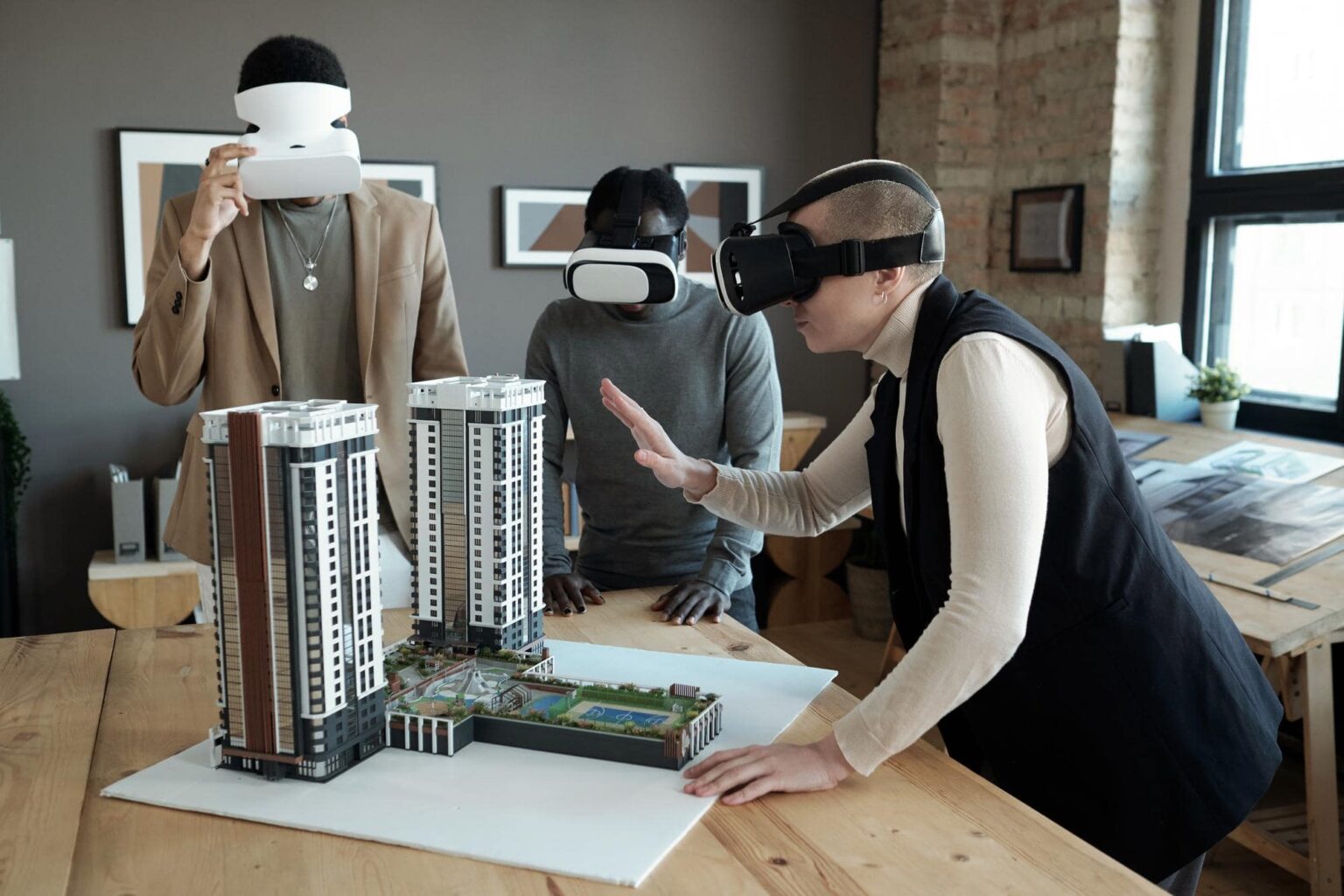Augmented Reality (AR) is revolutionizing the construction industry by enhancing visualization capabilities and enabling on-site decision-making. AR technology overlays virtual information and 3D models onto the real-world environment, providing construction professionals with real-time, context-aware data and visualizations. Here’s how AR enhances construction visualization and on-site decision-making:
- Design Visualization: AR allows construction teams to visualize digital 3D models directly on the construction site. By wearing AR-enabled devices, such as smart glasses or mobile devices, architects, engineers, and contractors can superimpose virtual models onto the physical environment. This visualization helps stakeholders better understand the design intent, detect design flaws or clashes, and make informed decisions during the design review process.
- Clash Detection and Quality Assurance: AR can automatically detect clashes between virtual models and the physical environment. By overlaying the virtual model onto the real-world site, inconsistencies and clashes can be identified in real-time. This enables construction teams to address issues promptly, reducing rework, and improving overall construction quality.
- On-Site Instructions and Training: AR provides on-site instructions and training to construction workers. AR devices can overlay step-by-step instructions, safety guidelines, and equipment operation procedures onto the workers’ field of view. This improves worker productivity, reduces errors, and enhances on-site safety by providing real-time guidance.
- Progress Monitoring and Visualization: AR enables real-time progress monitoring by overlaying digital information onto the construction site. This allows project stakeholders to compare the actual construction progress against the planned schedule, identify delays or deviations, and take corrective actions promptly. AR visualization also helps clients and project owners to have a better understanding of the project’s progress and make informed decisions.
- Site Logistics and Planning: AR can assist in site logistics and planning by superimposing construction phasing, equipment locations, and material delivery paths onto the physical site. This helps optimize construction workflows, plan site logistics, and coordinate activities more efficiently. AR visualization also aids in identifying potential safety hazards or bottlenecks, enabling proactive mitigation measures.
- Remote Collaboration and Communication: AR facilitates remote collaboration and communication among project team members. By sharing a live AR view of the construction site, stakeholders from different locations can virtually join meetings, discuss design issues, and provide real-time guidance. This enhances communication efficiency, reduces travel costs, and speeds up decision-making processes.
- Maintenance and Facility Management: AR can be used for maintenance and facility management purposes. By overlaying virtual information onto physical equipment or building components, maintenance technicians can access real-time data, equipment manuals, and instructions. AR visualization simplifies maintenance tasks, improves accuracy, and reduces downtime during repair and maintenance activities.
- Safety and Training Simulations: AR enables safety and training simulations for construction workers. By overlaying virtual hazards or emergency scenarios onto the physical environment, workers can undergo immersive training and practice safety protocols. This helps improve on-site safety awareness, reduces accidents, and enhances overall worker competency.
In summary, AR technology is enhancing construction visualization and on-site decision-making by providing real-time, context-aware information and virtual overlays on the physical environment. AR improves design visualization, clash detection, progress monitoring, site logistics planning, collaboration, maintenance, and safety simulations. By leveraging AR, construction professionals can make more informed decisions, reduce errors, enhance productivity, and improve overall project outcomes.



